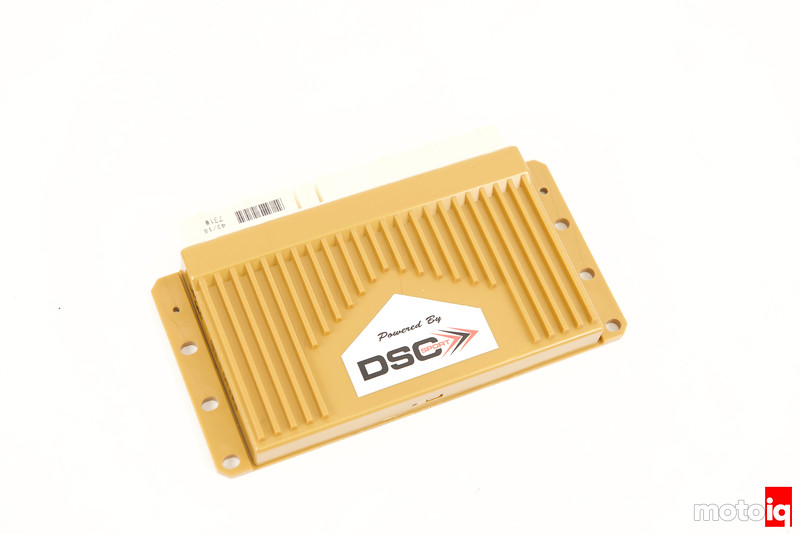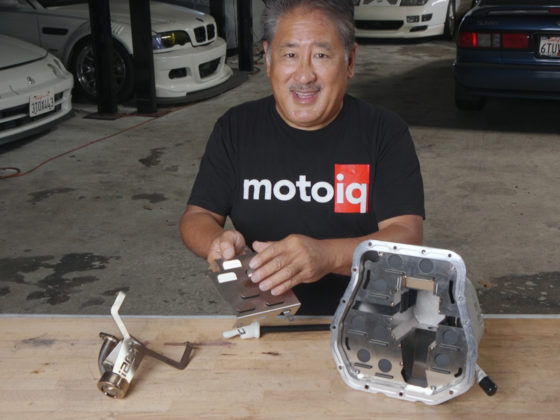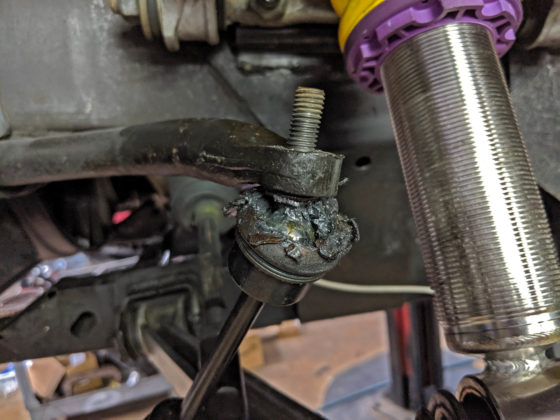
Next is the Accel Table. The Accel Table is where one sets the damping force modifier for each damper for the given throttle position. By utilizing throttle position the damper force can be increased or decreased as needed to allow the vehicle to put power down on corner exit or squat on straight line launches. It can also be utilized to predict higher speeds and increase damping as needed. This is a predictive strategy. You can control these attributes.
Accel Percentage Table – Just as with the G-Force Table, each box of the Accel Table contains four
smaller boxes representing each corner of the vehicle. The percentage selected here represents the
overall percentage of available damping force as set in the “Settings Edit Panel”.
The damper percentage is applied when the throttle is pressed and remains applied for the amount of
time selected in the “Decay” portion of the “Threshold Box”. After this time has elapsed, the G-Force
table is applied.
NOTE: The units on the graph are units of G-force, and can be easily compared to other values in other
tabs and on the G-force table
Settings Edit Panel – Each selectable box inside the G-Force Table contains four smaller boxes
representing each corner of the vehicle. The cells are arranged to match each wheel; the top-left cell is
the front-left wheel, the right-top cell is the front-right wheel, the bottom-left cell is the rear-left wheel, and
the bottom-right cell is the rear-right wheel. The dampers are set in each box by changing the percentage
in the Settings Edit Panel. The percentage selected here represents the overall percentage of available
damping force as set in the “Shock Calibration Table”. Shades of grey directly correlate to the shock
calibration table. Always remember to hit update to save in the cell you are editing.
Threshold Box – The Threshold Box allows one to set the amount of time the damper force is applied
once a set throttle position has been exceeded and the vehicle is over a set minimum speed.
Decay – The Accel Percentage Table is applied before the G-Force Table is referenced. It is only active
for the specified “decay” value. This is usually set to 1000. 1000 = 1.0sec; 0500 = 0.5sec; etc
TPS – This table is only active when you reach the set throttle position rate setting, and is calculated as a
percentage of maximum throttle.
Speed – This table is only active up to the target speed. It is typically set to 60mph.

The Speed Tab is where one sets the speed at which the system does or does not influence overall
damper force. The settings on this tab are used to provide stability as the vehicle speed increases from
60 to 150mph. Over 150mph, the last group of cells extrapolates out.
NOTE: The percentages selected in the Settings Edit Panel for each speed are added to the percentages
in the G-Force table when the vehicle is at or above the set speed and below the G-Force setting in the
Speed G-Limit Threshold.
The editable values here are:
Speed Table – The Speed Table has 60mph on the left, and 150mph on the right. The calibration can be
changed the same way the shock calibration can be changed. Clear all values, input your 60mph values
and your 150mph values, then click “fill empty” and the system will interpolate the rest.
Settings Edit Panel
•Each selectable box inside the G-Force Table contains four smaller boxes representing each corner of
the vehicle. The cells are arranged to match each wheel; the top-left cell is the front-left wheel, the right top cell is the front-right wheel, the bottom-left cell is the rear-left wheel, and the bottom-right cell is the
rear-right wheel. The dampers are set in each box by changing the percentage in the Settings Edit Panel.
The percentage selected here represents the overall percentage of available damping force as set in the
“Shock Calibration Table”. Shades of grey directly correlate to the shock calibration table. Always
remember to hit update to save in the cell you are editing.
Speed G-Limit Threshold Box
•This setting controls when the speed table is actively influencing the force of the dampers.
•Units are usually set up with .30G per second in all 4 values. This means when the car exceeds .3G per
second in any direction, the speed table will no longer be applied in addition to the G-Force table.




4 comments
I need to dig through this with notes and stuff but it’s really interesting getting an idea of the algorithm that the controller’s using. On the shock hardware side themselves, do you get the impression the stock Porsche dampers are functioning like the Tractive setup DSC offers, where it’s a solenoid bleed valve to tweak bypass flow around the piston shim stack? From hearing about issues with the magnetorheological shocks, I’ve always liked the idea of doing things this way more.
I know what OEMs are using it for and all but… looking at the way you can set up the DSC controller, do you think there’s good opportunities to set up a race car to gain lap time with something like this system compared to a well setup 3 way motorsports damper setup, or are some of the ways you’d do body control with dampers for a streetable setup just kind of crutching not enough spring rate?
I am pretty sure it’s a PWM solenoid controlling a bleed around the piston. The aftermarket Damptronic version is like that, there is the valve on top of the piston that controls the flow through the shaft.
thanks for the in depth descriptions. DSC doesnt do a great job in telling people how to use this thing. this will help in tuning my c7 z06. I have the dsc box on my car and it really is professional level software and tuning with a steep learning curve (and a bad software interface to boot) therefore the only changes i have made are to the tour and sport G comfort settings and left track mode completely alone.
They really don’t but once you get the hang of it, you can do a lot with it. How well does the magnaride respond to tuning inputs with the box?